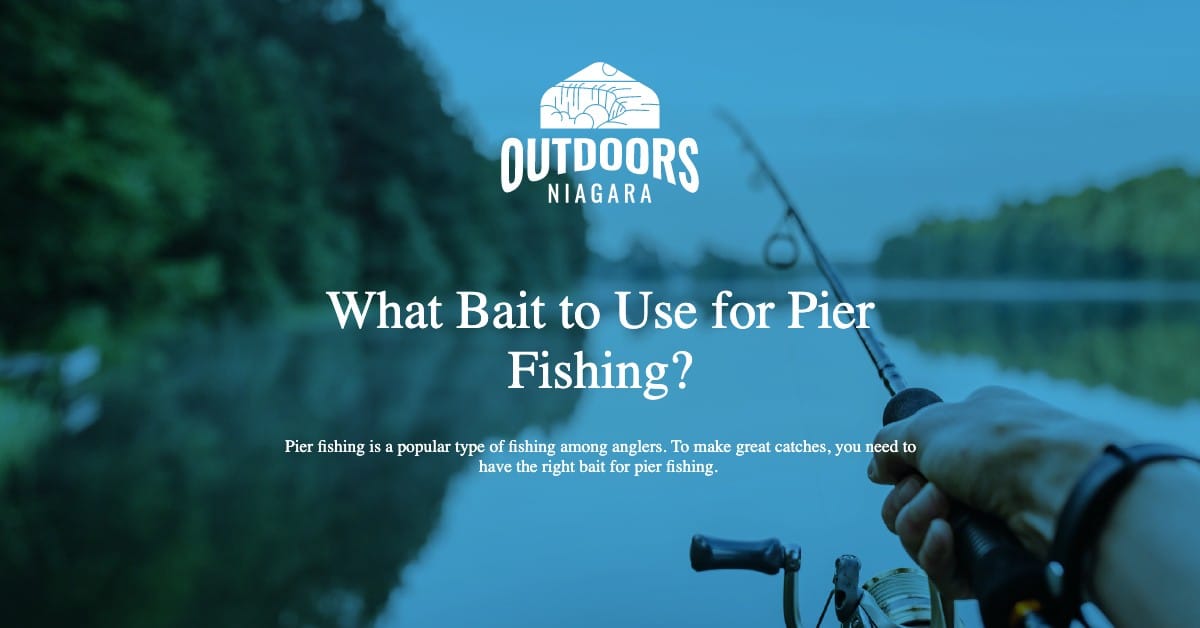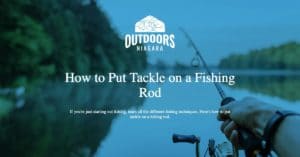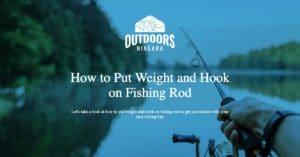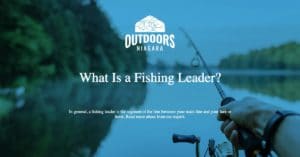Pier fishing is a popular type of fishing among anglers.
It provides anglers with a way of accessing coastal fish while staying off a boat using their pier fishing rod.
One advantage pier fishing has over boat fishing is that you can still be productive even when there are big waves and high winds.
Pier fishing can be done in various ways, and there is a wide variety of fish to catch. But to make great catches, you need to have the right bait for pier fishing.
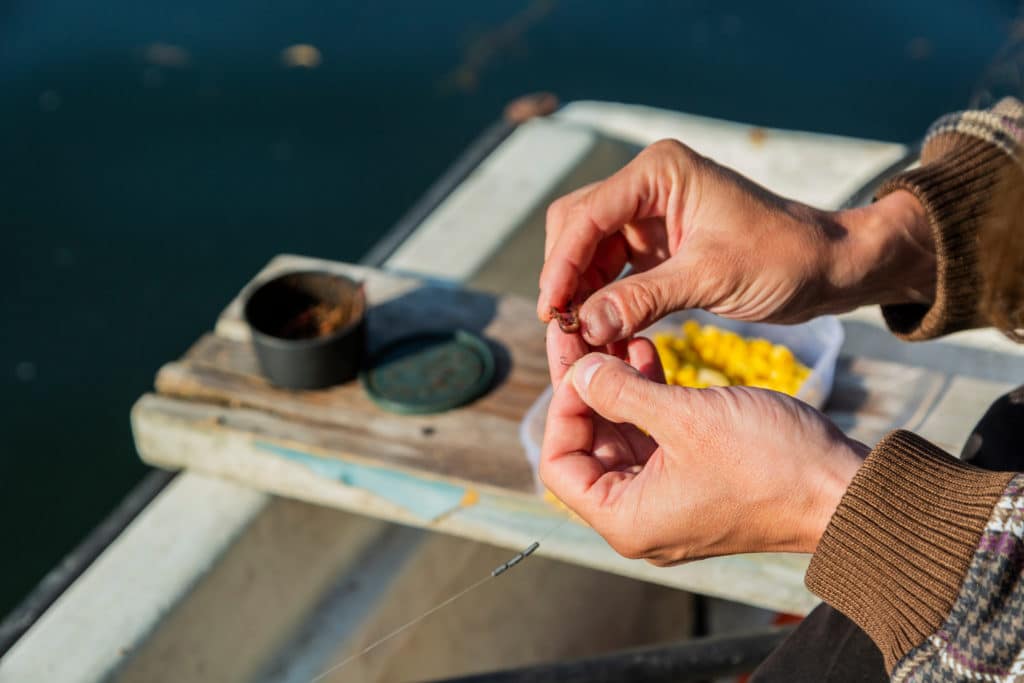
Contents
Species of Fish You May Come Across when Pier Fishing
Piers host anglers of all ages hoping to make a catch.
Some may be seasoned anglers, while others may be amateurs.
Anglers typically catch these fish and others when pier fishing:
- Flounder
- Mullet
- King mackerel
- Queenfish
- Skates
- Mahi-mahi
- Black drum
- Striped bass
- Redfish
- Kingfish
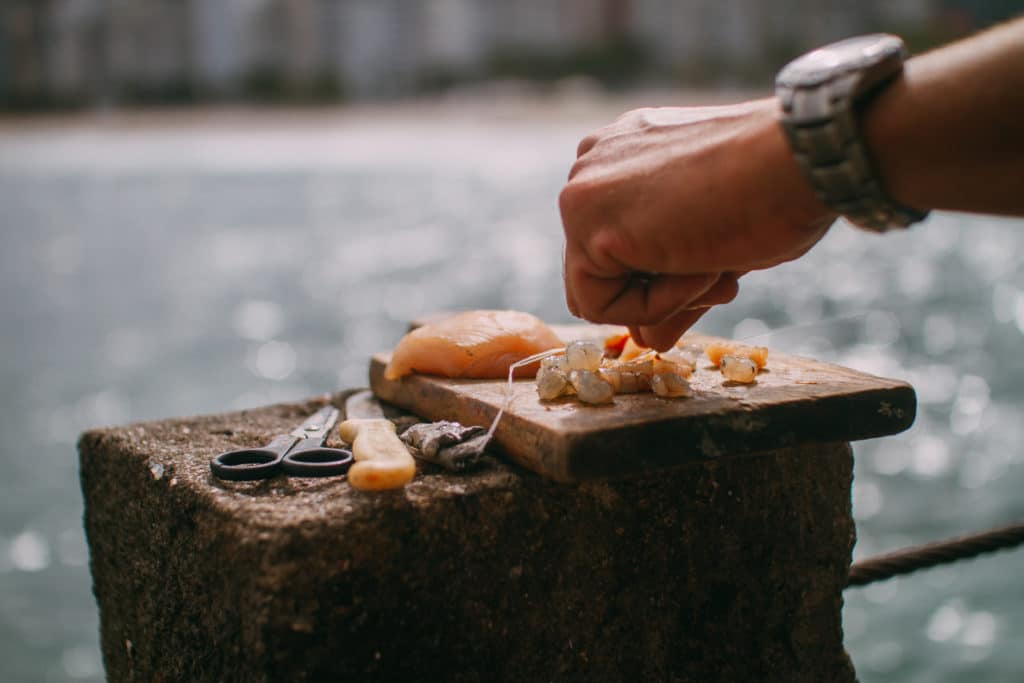
Where to Fish on a Pier
Knowing when to expect fish and where to fish for them is important.
If you’re new to pier fishing, you may want to keep an eye on other anglers to know what places are best, as they vary from one pier to another pier.
Many anglers are usually found fishing at the pier’s end because this is where the water is deepest. And deeper waters host bigger fish.
Sometimes, the side of the pier may be the best position to fish from. But this depends on the direction of the tide.
If you’re on one side of the pier and the tide is moving away from you, that side is the best place for you to fish.
When the direction of the tide changes, you may have to move to the other side of the pier.
The best time to fish from a pier is when there’s a moving tide. Low tides result in some piers having considerably less water, making it a bad time to fish from the pier.
Sometimes, fish may choose to move nearer to the shore, but this depends on how the pier is structured.
While pier fishing, keep an eye out for rock formations, drop-offs, and other underwater structures.
These are where you’ll find fish hiding or feeding.
Some predator fish move up higher in the water when chasing prey.
Although you may not see these predators hunting, birds will.
Birds are known to be natural fish-finders, and they have no problem spotting fish you may have a difficult time seeing.
So, when you see birds flying in circles around a spot, you know it’s showtime.
What Bait to Use
Anglers are usually faced with the decision to choose bait.
But this decision ultimately depends on the target species and the fishing location.
Before spending money on expensive bait, take your time to find out the fish species usually caught at the pier.
Most commercial piers have a bait and tackle shop.
The bait shop will provide you with the bait you may need for fishing off the pier.
Live bait is ideal, so try to find it in a bait shop. Some great baits for pier fishing include:
Shrimp
Many anglers consider shrimp their go-to bait.
They work well as bait for pier fishing because they are found in saltwater environments.
The fish in these waters are attracted to the movement and scent of shrimp.
Shrimp can attract all sizes of fish, so you’re as likely to catch a large fish as a small one.
Handling a shrimp is relatively less messy.
You can easily cut it into tiny pieces and twist it onto your hook.
Shrimp can be expensive, but they are usually worth every penny.
Examples of fish that love shrimp are redfish and snapper.
Shellfish
Many fish species feed on shellfish such as crabs, clams, and mussels. Shellfish are versatile when used as bait.
Crabs are great as bait when fishing for cobia.
Although you need to specially handle them to prevent a claw clamping down while putting the bait on a hook, the stress is worth it.
Some shellfish are slippery, and anglers leave them out in the sun to harden.
Before catching any shellfish you intend to use as bait, ensure you’re allowed to do so.
Some shellfish have fishing regulations regarding them.
Blood worms
Blood worms are so named because they ooze “blood.”
They are messy to deal with and leave your hands looking nasty and dirty, especially under the nails.
Using blood worms as bait will change that narrative when you’ve been out fishing for a while without a catch.
Blood worms are more expensive than shrimp, but they’re also worth every dime.
Cut Bait
Aroma is an important way of getting saltwater fish, and the aroma of cut bait is as strong as they come.
Prepare bait by cutting up the smaller fish you caught while saltwater fishing and deem them too small to be put in the cooler.
You can attract a wide of fish using cut bait. Some of the fish include bluefish, sea bass, and mahi-mahi.
Baitfish
Fish are usually attracted to the scent and motion of their prey.
Potential prey like pilchards, eels, and ballyhoos are caught and used as baitfish.
Baitfish are caught using a cast net, and they’re stored with frozen packs, which you can get at a bait shop.
Other bait you can use are squids and sand fleas.
You can also check the bait shop for different lures for pier fishing.
Best Time to Go Pier Fishing
The best time for pier fishing usually depends on the tide.
Most times, it’s best if you pier fish two hours before or after high tide.
If your target fish feeds on baitfish, dusk and dawn is a great time to go pier fishing.
The moment before dawn and the first hour after sunset are particularly excellent for pier fishing.
Another important factor is light. Pier fishing under low light conditions is good because that is the period fish let their guard down.
When light conditions are low, fish tend to move into shallower water, making them easy for an angler to reach.
Useful Pier Fishing Tips
Here are some useful tips to have an enjoyable pier fishing experience:
- When choosing a pier fishing location, consider the time of the year and your target species.
- Find out if you need a fishing license to use the pier. Many commercial fishing piers will allow you to fish without a license, but not all. If you need a license, get it beforehand.
- When using a public pier, give other anglers enough room to cast comfortably. And don’t cast over another angler.
- Never leave your gear or catch unattended. You don’t want someone slipping and getting injured.
- Pier fish at dawn and dusk, as these are the best periods for pier fishing.
- Never handle your bait when you have sunscreen or insect repellent on your hands. The chemicals will repel fish from taking your bait.
- Use a pair of polarized sunglasses. They can make the difference between an empty bucket and a full one. The glasses will eliminate the glare off the water’s surface, allowing you to spot fish more easily.
- Have a picnic chair with you. You may need it to relax and enjoy the view.
- When you’re done fishing, clean the spot you used.
Final Thoughts
Pier fishing is fun, affordable, and convenient. There are many fishing piers, and each one is different.
Before going on a pier fishing trip and getting your rod and reel ready, try to know all you can about the fishing location.
Knowing the fish species you’re after will help you choose a suitable bait.
Be sure to ask fellow anglers what has been working before rushing to get bait.
The bait shop should have everything you need.
If you don’t wish to spend money on bait, you may decide to catch your bait.
Pier fishing is as complex or as simple as you make it to be.
If you’ve never gone pier fishing, try it just once and you’ll see how much fun you’ve been missing.

